Pansies are stunning flowers, and they’re also popular garden plants. But before you can start growing them in your garden or container, you first need to know how to grow Pansies. Pansies are one of the most popular types of flowers in the world. They come in various colors and can be grown indoors or out.
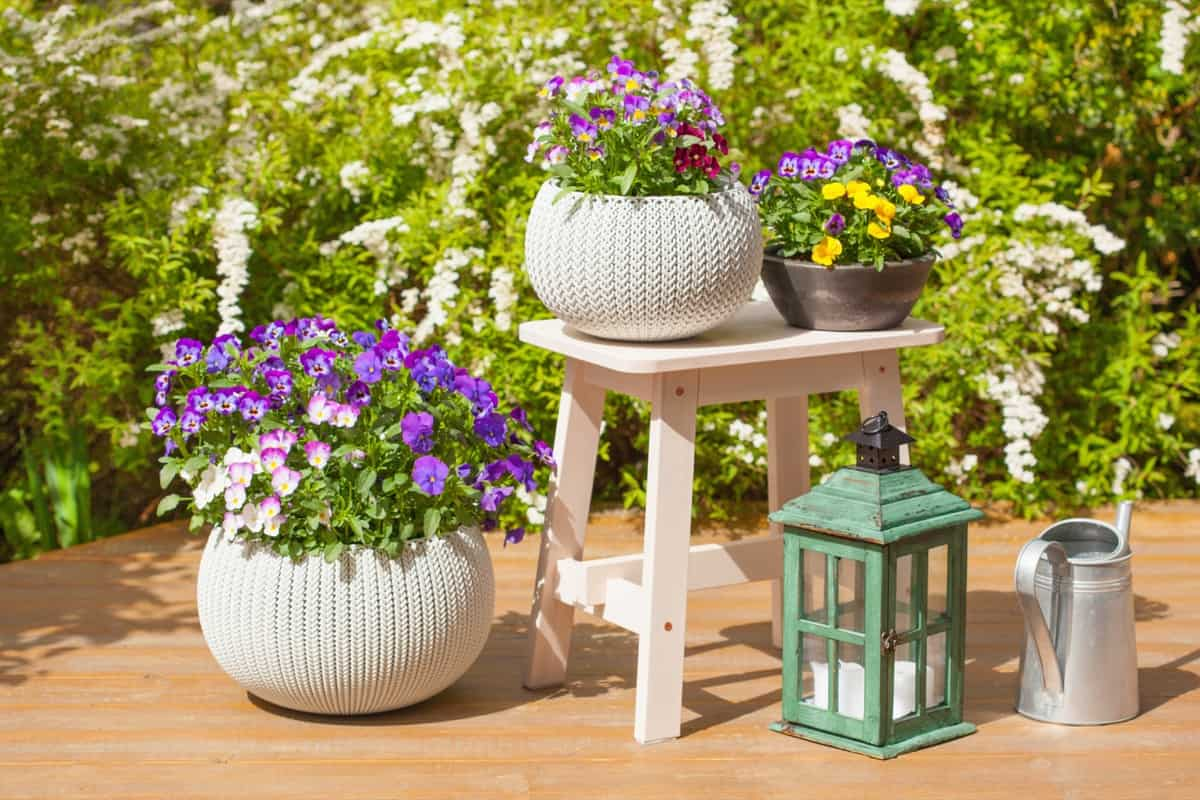
Pansies require little care once established and will bloom continuously throughout the year. Pansies are fantastic flowers to grow in containers, but they require some care. Ensure you provide them with the right amount of sunlight, water, and nutrients, and remove any dead Pansy plants so that the others can thrive. Follow these tips for growing Pansies in containers, and you’ll be able to enjoy these lovely flowers all season long.
How to grow and care for Pansies in containers
Types of Pansy plants
- Bolero series – There are a few Pansy plants, but the most common is the Bolero Pansy. This type has broad, lacy petals that are light pink or purple on the outside and white on the inside.
- Bingo series – The Bingo series comprises single-or double-flowered plants. This means more flowers are on each stem, giving the plant a livelier appearance. Some models in the series also have brightly-colored petals, adding life to any room. The Bingo Series is worth checking out if you’re looking for an affordable option to add color and life to your home.
- Cool wave series – These are tough, compact, and have wide blooms that turn a cool pink or purple in the fall. The cool wave series is perfect for containers or small gardens.
- Freefall series – This popular variety features drooping petals and is perfect for adding a touch of beauty to any garden. The freefall series are Pansy plants that are classified as short-day plants. These Pansy plants require 8 hours of sunlight or less to achieve peak performance. These plants are perfect for those living in regions with short days because they do not need as much sunlight as other Pansy plants.
In case you missed it: How to Grow and Care for Gardenia in Pots: A Step-by-Step Guide for Beginners
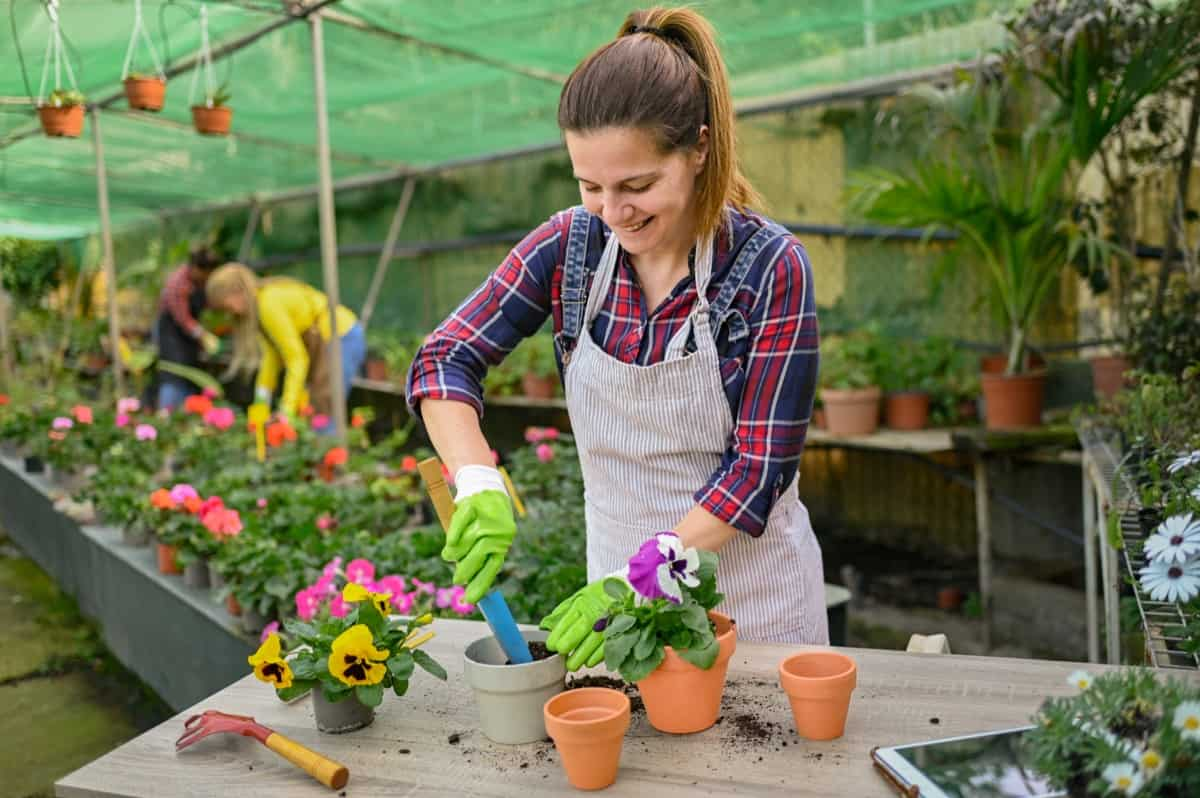
Climate suitable for growing Pansies in containers
To grow Pansies in containers, you will need full sun exposure. This can be achieved by growing Pansies in a garden or container outdoors in a sunny location. If you grow Pansies indoors, ensure that the container has strong light exposure and plenty of ventilation. Space your Pansy plants 12-18 inches apart. To successfully grow Pansy plants in pots, the temperature requirement should be around 18°C to 24°C. At these temperatures, the plant will grow vigorously and produce flowers.
Soil requirement for growing Pansies in containers
For Pansy flowers to grow in containers, potting soil composed of a good blend of sand, amended with peat moss and compost, should be used. Some gardeners also add 1-2 tablespoons of lime or gypsum per quart of soil when planting Pansies. Additionally, because Pansies are heavy feeders, they need lots of nitrogen and other fertilizers in their soil to achieve vigorous growth. Make sure to give your plants the nutrients they need by checking the label on the fertilizer you are using and adding it according to the dosage recommended.
Water requirement for growing Pansies in containers
You can use a clay or plastic pot, but make sure the plastic pot has a drainage hole in the bottom. If you are growing Pansy flowers in containers, give them enough water. The best way to measure how much water your plants need is to measure their depth and subtract 1/2 inch. For example, if the plants are 3 inches deep, they need only 1 inch of water per day.
In case you missed it: How to Grow and Care for Mandevilla in Your Garden
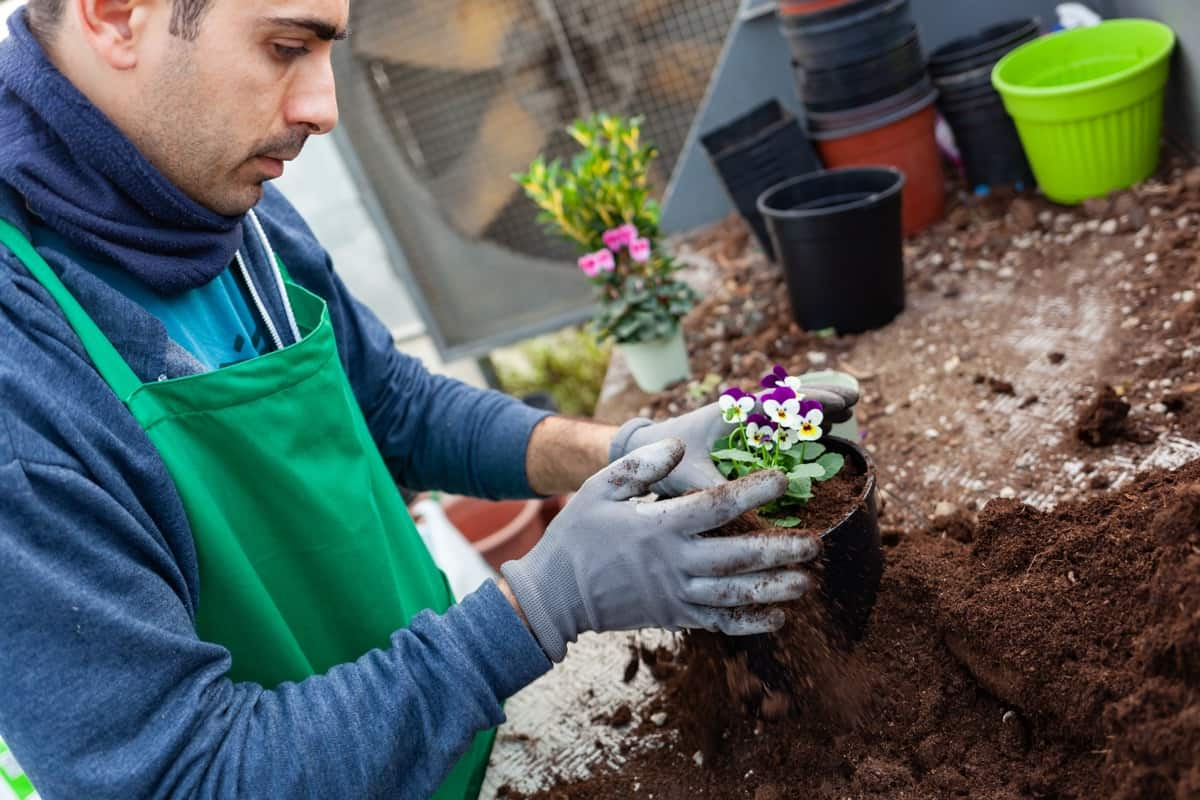
Be sure to water your plants regularly during hot and dry weather and when the soil feels dry. Pansy flowers need at least 1 inch of water per week and more if the weather is hot and conditions are dry. It is also essential to ensure the potting mix doesn’t become too wet; keeping it evenly moist will help prevent root problems.
Container size required for growing Pansies
When growing Pansies in containers, choose a size that is big enough to fit the plants comfortably but not too large. For best results, choose a container with a depth of at least 24 inches and a width of at least 18 inches. You can plant Pansies in the ground or soil mixed with sand or gravel. If planting them in the ground, prepare the soil by removing any rocks or roots before adding the plants. When planting Pansies in containers, water them well every day during their first week and once a week after that.
Propagating Pansy
From cuttings
Pansies are hardy, long-lived annual flowers that can be propagated from stem cuttings taken in late winter or early spring. If growing Pansies from cuttings taken from another Pansy plant, be sure to soak the cutting overnight in cool water before transferring it to new potting soil. Preferably, take stem cuttings 1 inch long and 0.5 inches in diameter at the base. Ensure the cutting is deeply rooted before taking it out of the pot.
To propagate Pansies in containers, insert a basal stem cutting into moist potting soil amended with organic matter and water. Keep the container moist but not wet, and keep the temperature around 19°C during propagation. After rooting, repot into fresh soil when large enough to handle and water well.
From seeds
To propagate Pansy from seeds, you’ll need a small pot or container with drainage holes and the Pansy seed. Germination will take around ten days at 21°C. Once the seeds are germinating, provide consistent water and fertilize as needed. When they’re large, transplant them into larger pots or containers and deadhead them to maintain proper garden spacing.
Transplanting Pansy seedlings
Before planting Pansy seedlings in your pot, ensure the soil is well-drained and has good fertility. A good ratio for Pansy soil is one-part organic matter to two parts sand or peat. You can also add some grit if desired. To plant your Pansy seedlings, make a small hole in the soil with your finger and insert the root end of the plant. Use a water dropper to wet the soil around the plant, then tamp it down lightly with your fingers.
Water generously, using a rain barrel or hose extension until the container is fully wetted. When transplanting Pansy plants into larger pots, use fresh soil rather than old garden dirt. Mix one part of old garden dirt with three parts of fresh potting soil before transplanting to avoid problems such as root rot or poor growth due to poor drainage.
In case you missed it: How to Grow and Care for Rubber Plants Indoors: A Beginners Guide

Pansy plant care
Fertilizer requirement for growing Pansies in containers
Some common ingredients found in fertilizers for garden plants include nitrogen, phosphorus, potassium, magnesium, calcium, and sulfur. It is helpful to understand these elements before beginning to mix your plant food. Nitrogen helps to encourage vigorous growth and strong stems; phosphorus promotes flower production; potassium aids in leaf growth and photosynthesis; magnesium helps to keep plant cells functioning properly; sulfur helps control pests and diseases.
A good general fertilizer for container plants is an organic matter formula mixed with a water-soluble fertilizer. During the growing season, fertilizing every two weeks is usually adequate. For heavy feeders such as Pansies, nitrogen-rich formulas may be needed on a more frequent basis.
When selecting a fertilizer, it is essential to read the product label and determine what nutrients are included. Some fertilizers also contain insecticides or fungicides, so selecting one specifically designed for container plants is important. Always read and follow all directions on the product label.
Repotting Pansy plant
Pansy plants are easy to grow in containers, but they do best if their roots are kept moist. Water the Pansy plant regularly, using a water-soluble fertilizer when the plant is actively growing. Avoid over-watering, which can cause root rot. Repot Pansies every two to three years in spring or when they outgrow their container. In smaller pots, repot Pansies by breaking up the potting soil and packing it into the hole.
In case you missed it: How to Grow and Care for Poinsettia Indoors: Propagation, Planting, and Management
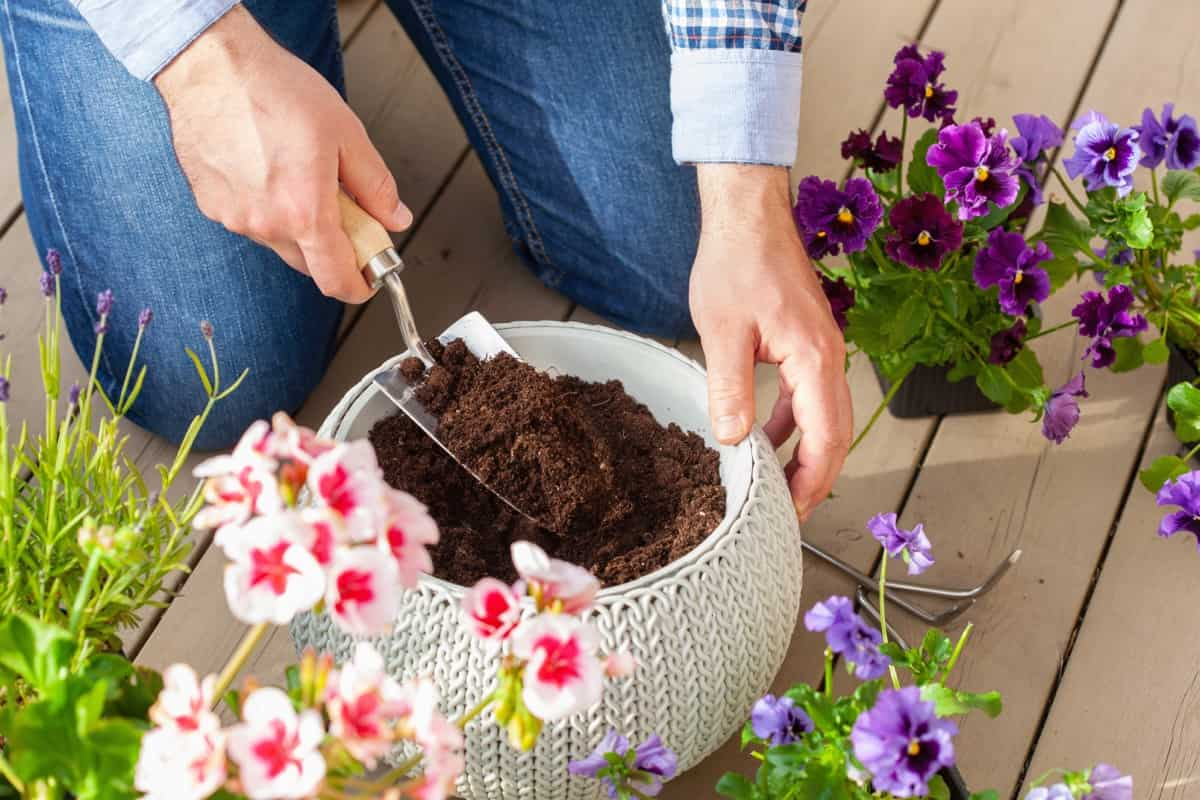
Pansy plant care in winter
Pansies need a soil mix with plenty of organic matter to keep them healthy in winter. Add compost or aged manure before planting Pansies in the garden. Water regularly in winter, keeping the soil evenly moist but not wet. Fertilize with a soluble fertilizer every other month during the growing season and again in early winter when growth starts to slow. If you live in a colder climate, cover Pansies with plastic wrap in the winter to help protect them from frostbite.
Pruning Pansy plant
‘Pansies are typically pruned during the dormant season in late winter to early spring. During this time, the plant is not performing as well and can be pruned more aggressively without harming the plant. Pruning should also be done periodically throughout the growing season to maintain your Pansy plants’ desired shape and size. ‘Pansies are typically pruned during the dormant season in late winter to early spring. During this time, the plant is not performing as well and can be pruned more aggressively without harming the plant. Pruning should also be done periodically throughout the growing season to maintain your Pansy plants’ desired shape and size.
Prune Pansies when they are dormant in late winter or early spring: overwintering Pansies will bloom again when they re-emerge, so don’t prune them then. Pansy plants can grow quite tall and become top-heavy if not regularly trimmed. This will help maintain their graceful appearance.
Pests and diseases of Pansy and their control
Pansy is relatively easy to grow and care for in containers, but some pests can be a problem. Aphids, spider mites, whiteflies, and thrips are all common pests of Pansies. Aphids can cause leaves to curl and turn yellow or green, while spider mites cause webbing on plants. Whiteflies feed on the nectar and pollen of flowers so that they can be a nuisance, particularly during heavy bloom periods. Thrips are tiny insects that suck sap from plants.
They can cause young Pansy plants to wilt and die. There are several ways to control these pests: use an insecticidal soap spray when aphids are first noticed; set out a trap filled with water and attractants (like candy) to catch adult spider mites; place floating row covers over Pansies during hot weather to protect them from whiteflies; remove infested leaves immediately; dust Pansy plants weekly with a registered pesticide when aphid populations are high.
In case you missed it: Growing Viburnum Plants: A Guide to Propagation, Planting, and Care
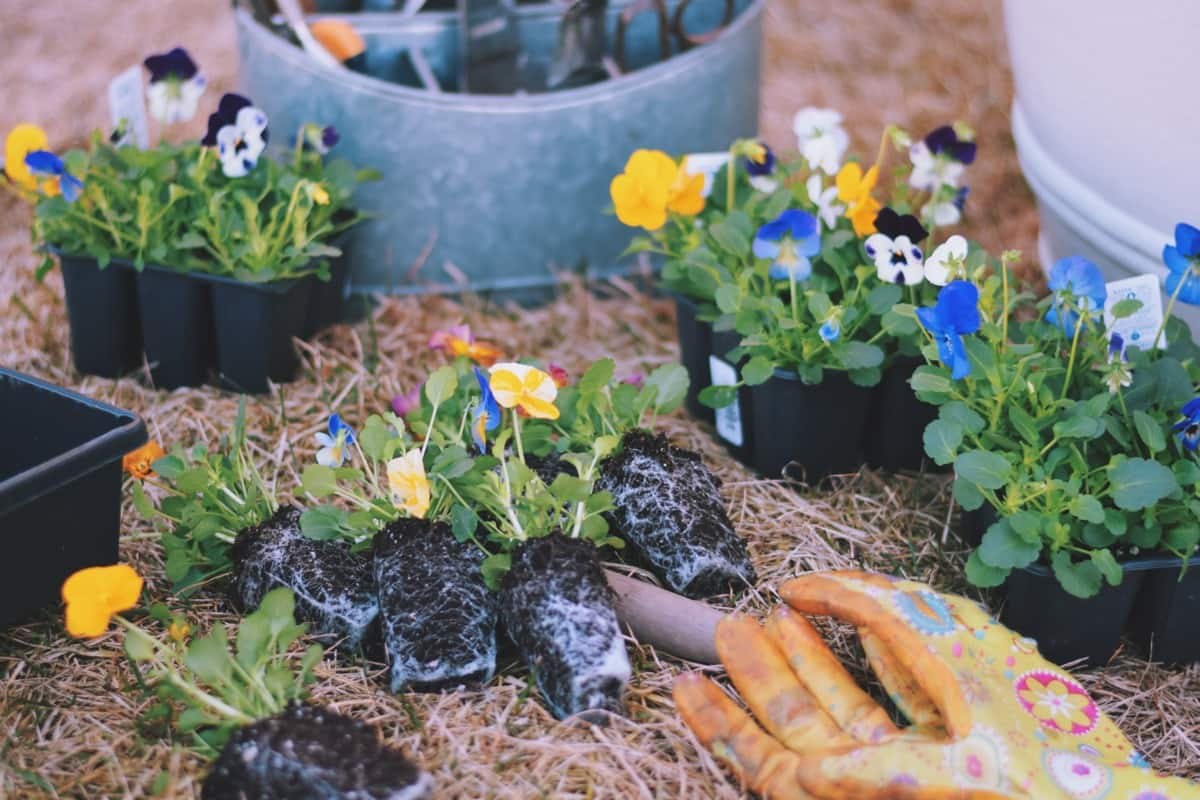
If your Pansy plants suffer from fungal diseases like mildew, there are few effective control methods besides removing and destroying the affected plants. Fungicides labeled for use against this disease will usually kill fungus and insects; however, follow label directions carefully, as over-application may damage the plant. Prevention is always better when preventing pests from attacking your Pansies, so be sure to scout for them early and take appropriate action if they do appear.
Conclusion
Gardening can be a worthwhile experience, but it is also a challenging one. Growing Pansy plants in containers is a great way to get the flowers you want without dealing with the hassle of a garden. By following these simple tips, you can ensure that your Pansies grow and flower healthily.
- How to Grow Hibiscus from Flower
- Plantation Ideas for Home Decoration: A Beginners Guide
- Flower Garden Designs and Layouts for Beginners
- Planting and Spacing Techniques in Papaya: A Beginner’s Guide
- Growing Gold: Essential Techniques for Planting Pineapples
- How to Make Kalanchoe Plant Bushy: Home Remedies and Solutions
- 11 Reasons Why Your Gardenia is Not Blooming: Home Remedies and Solutions
- Eco Elegance: The Guide to Designing a Drought-Tolerant Landscape
- Gardening on a Slope: Strategies for Hillside Landscaping
- Nourish and Flourish: Top Organic Mulches for Thriving House Plants
- Everything You Want to Know about Indian Mogra Flower: Discover Uses and Growing
- Green Thumb Success: Expert Tips for Cultivating Greenhouse Pumpkins All Year Round
- Maximize Growth & Flavor: The Ultimate Guide to Companion Planting in Herb Gardens
- How to Control Rhododendron Problems Naturally: Home Remedies and Organic Ways to Fix Them
- Natural Magic: The Remarkable Benefits of Cinnamon for Plants
- Best Steps to Revive Dying Tulip with Natural and Organic Treatment
- 10 Reasons Why Your Angel Trumpet is Not Blooming: Remedies and Treatment
- How to Fix Periwinkle Leaf and Flower-Related Problems: Natural Remedies and Solutions
- How to Fix Zinnias Leaf and Flower Problems: Discover Natural and Home Remedies
- Organic Steps to Induce Lemon Tree Flowers: A Comprehensive Guide
- Bloom Booster: Crafting the Perfect Homemade Bougainvillea Fertilizer
- Optimizing Growth: A Guide to Applying NPK Fertilizer for Potted Plants
- 10 Best Homemade Fertilizers for Rubber Plant: DIY Recipes and Application Method
- How to Boost Female Pumpkin Flowers: Effective Steps for More Flowers and High Yields
- Transform Your Indoor Garden: Top Benefits of Pink Salt for Houseplants
- 10 Best Homemade Fertilizers for Peacock Plants (Calathea): Easy DIY Guide
- Unlock Blooms: 9 Reasons Why Your Potted Chrysanthemum is Not Blooming
- 8 Reasons Why Your Potted Hibiscus is Not Blooming: Fix it with Simple Solutions
- Unlock Blooms: 9 Key Reasons Your Potted Frangipani Won’t Flower
- 10 Reasons Why Is My Ice Plant Not Blooming: Remedies and Treatment
- 10 Reasons Why My Potted Hydrangea Not Blooming: Treatment and Remedies
- 10 Reasons Why is My Wisteria Not Blooming: Remedies and Treatment
- 10 Reasons Why is My Goldfish Plant Not Blooming: Remedies and Treatment
- Maximize Your Space: Ultimate Guide to Balcony Gardening with Grow Bags
- 10 Reasons Why Your Iris is Not Blooming: Remedies and Treatment
- 10 Reasons Why Your Anthurium Plant is Not Blooming: Treatment and Remedies